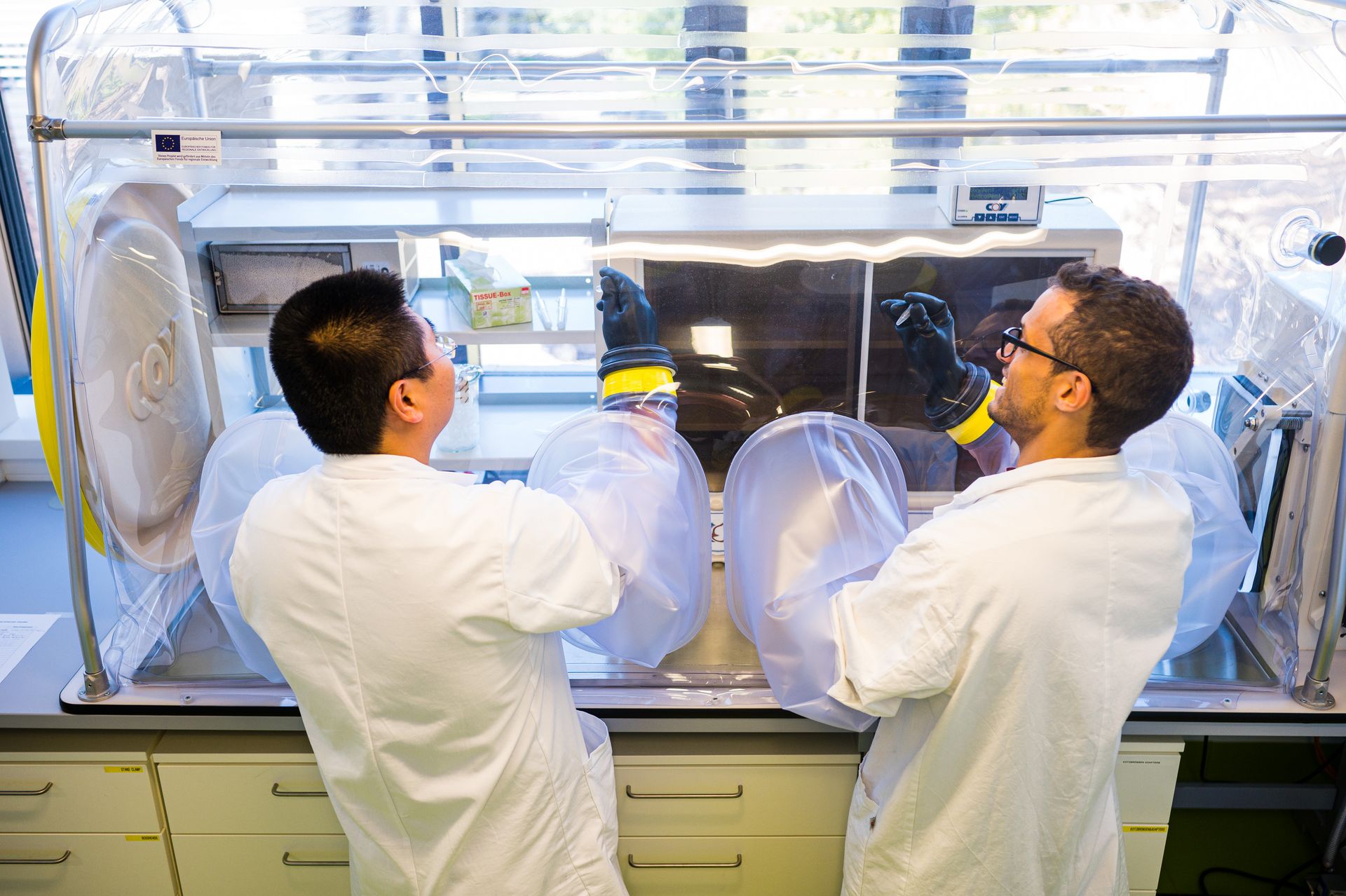
Genome Mining for Secondary Metabolites
Dr Chengzhang Fu
The misuse of antibiotics on a global scale has led to an ever-growing antibiotic resistance crisis. Novel antimicrobial compounds are urgently needed. Developing novel genome mining approaches to harness the potential of the underexplored biosynthetic gene pathways and discover novel microbial secondary metabolites, is a potential antibiotic resistance crisis mitigation path.
Our research and approach
The antibiotic resistance crisis has been identified by the World Health Organization as one of the greatest threats to global health, food safety, and economic development. In addition to the fact that antibiotic misuse causes the emergence of drug-resistant microorganisms, the scarce amount of new antibiotic classes in the drug development pipeline is another factor intensifying the crisis. Thus, the discovery of new antibiotics is urgently needed.
Natural products are an invaluable resource for developing small-molecule drugs including antibiotics and anti-cancer drugs. A large percentage of approved drugs are related to natural products. Microorganisms not only historically contribute to the discovery of natural products, but will also serve as a prolific source in the future due to their enormous underexploited biosynthetic potential revealed in the post-genomic era.
The demand for novel small-molecule drugs is still growing due to different reasons, depending on the respective disease. Taking antibiotics as an example, the drug resistance challenge from pathogens is getting more and more serious, not to mention the dry pipeline for developing novel antibiotic drugs. The emerging multidrug resistance, extensive drug-resistance and pandrug-resistance in pathogens are rendering even the most effective antibiotics useless.
A high rediscovery rate is one of the main challenges to natural product based drug development. Finding new approaches to discover novel and bioactive natural products will be helpful to tackle the antibiotic resistance crisis. Since entering the new century, the increasing availability of whole-genome sequences from drug-producing microorganisms revealed that the potential to produce structurally diverse metabolites is far greater than previously expected. It is intriguing to discover better ways to activate cryptic biosynthetic gene pathways because only a limited number of bacterial metabolites are produced under standard laboratory conditions. This great unexploited potential has been recognized by scientists when analysing the massive genetic data of cultured and uncultured prokaryotes deposited in public databases. However, the fact that activating orphan gene pathways only led to few successful examples in natural products discovery indicates that novel and effective methods are still needed.
Our group pays attention to the problem of antibiotic resistance and is committed to the discovery of microbial-derived active small molecules using new ideas and new methods. Our group is interested in the application of genome mining approaches for the identification of microbial natural products with novel mechanisms of action which may help fighting drug resistance. Microorganisms provide us with tremendous gene resources which could be exploited in the post-genomic era using novel approaches integrated with cutting-edge technologies like direct cloning, genome editing, and biosensor technology.
Team members
Publications
2020
Dual-function chromogenic screening-based CRISPR/Cas9 genome editing system for actinomycetes
Wang Q, Xie F, Tong Y, Habisch R, Yang B, Zhang L, Müller R, Fu C (2020)
Applied Microbiology and Biotechnology 104 (1): 225-239DOI: 10.1007/s00253-019-10223-4
2019
Armeniaspirol Antibiotic Biosynthesis: Chlorination and Oxidative Dechlorination Steps Affording Spiro4.4non-8-ene
Fu C, Xie F, Hoffmann J, Wang Q, Bauer A, Brönstrup M, Mahmud T, Müller R (2019)
ChemBioChem 20 (6): 764-769DOI: 10.1002/cbic.201800791
Heterologous expression of bacterial natural product biosynthetic pathways
Huo L, Hug J, Fu C, Bian X, Zhang Y, Müller R (2019)
Nat. Prod. Rep. 36: 1412-1436DOI: 10.1039/C8NP00091C
2017
The natural product carolacton inhibits folate-dependent C1 metabolism by targeting FolD/MTHFD
Fu C, Sikandar A, Donner J, Zaburannyi N, Herrmann J, Reck M, Wagner-Döbler I, Koehnke J, Müller R (2017)
Nat Commun 8 (1)DOI: 10.1038/s41467-017-01671-5
Solving the puzzle of the one-carbon loss in ripostatin biosynthesis
Fu C, Auerbach D, Li Y, Scheid U, Luxenburger E, Garcia R, Irschik H, Müller R (2017)
Angew. Chem. Int. Ed. Engl. 56 (8): 2192-2197DOI: 10.1002/anie.201609950
2016
Isolation, structure elucidation, and (bio)synthesis of Haprolid, a cell-type-specific myxobacterial cytotoxin
Steinmetz H, Li J, Fu C, Zaburannyi N, Kunze B, Harmrolfs K, Schmitt V, Herrmann J, Reichenbach H, Hofle G, Kalesse M, Müller R (2016)
Angew. Chem. Int. Ed. Engl. 55 (34): 10113-7DOI: 10.1002/anie.201603288
2015
Biosynthetic studies of telomycin reveal new lipopeptides with enhanced activity
Fu C, Keller L, Bauer A, Brönstrup M, Froidbise A, Hammann P, Herrmann J, Mondesert G, Kurz M, Schiell M, …, Wink J, Müller R (2015)
J. Am. Chem. Soc. 137 (24): 7692-7705DOI: 10.1021/jacs.5b01794



